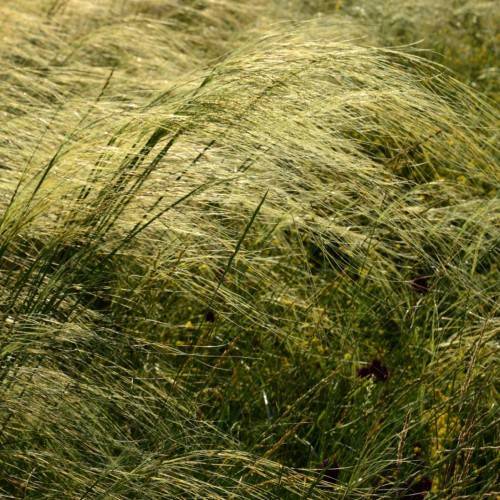
needle grass
Stipa capillata
Cycle:
Perennial
Watering:
Average
Hardiness Zone:
6 - 9
Flowers:
Flowers
Sun:
Full sun
Growth Rate:
High
Maintenance:
Moderate
Drought Tolerant:
Yes
Salt Tolerant:
Yes
Invasive:
Yes
Care Level:
Medium
watering
For best growth and health results, needle grass (Stipa capillata) should be watered once a week deeply. Water the lants until the area around the root system is soaked, ensuring the soil stays moist down at least 1 to 2 inches. Avoid wetting the foliage in order to prevent any fungal issues. During periods of hot temperatures and low rainfall, an additional watering may be necessary every 5 to 7 days. To help reduce water evaporation and maintain moisture, use mulch around the plants.
sunlight
Needle grass (Stipa capillata) grows best in full sun, meaning that it needs at least 6 hours of direct sunlight every day. Most needle grass is native to regions that experience long days in summer, so during the warmer months, it should receive 8-10 hours of direct sunlight. While needle grass can tolerate some shade, this should generally be minimal; too much shade can cause it to become leggy and floppy. If temperatures are expected to surpass 80°F (26°C) during the day, a bit of afternoon shade can help the plant retain its shape.
pruning
Pruning for a plant species like needle grass (Stipa capillata) should be done during its dormant period (rather than its growing season), which is typically in the late winter/early spring months after the first hard frost. Pruning should only be done when absolutely necessary as needle grass plants are fairly hearty and only require minimal pruning. It's best to prune only severely damaged or diseased parts of the plant, as cutting too much of the top growth can damage the plant and disrupt the natural balance and beauty of the landscape. When pruning, it is important to take care to only remove dead, damaged and diseased stems, as pruned stems will not regenerate.
